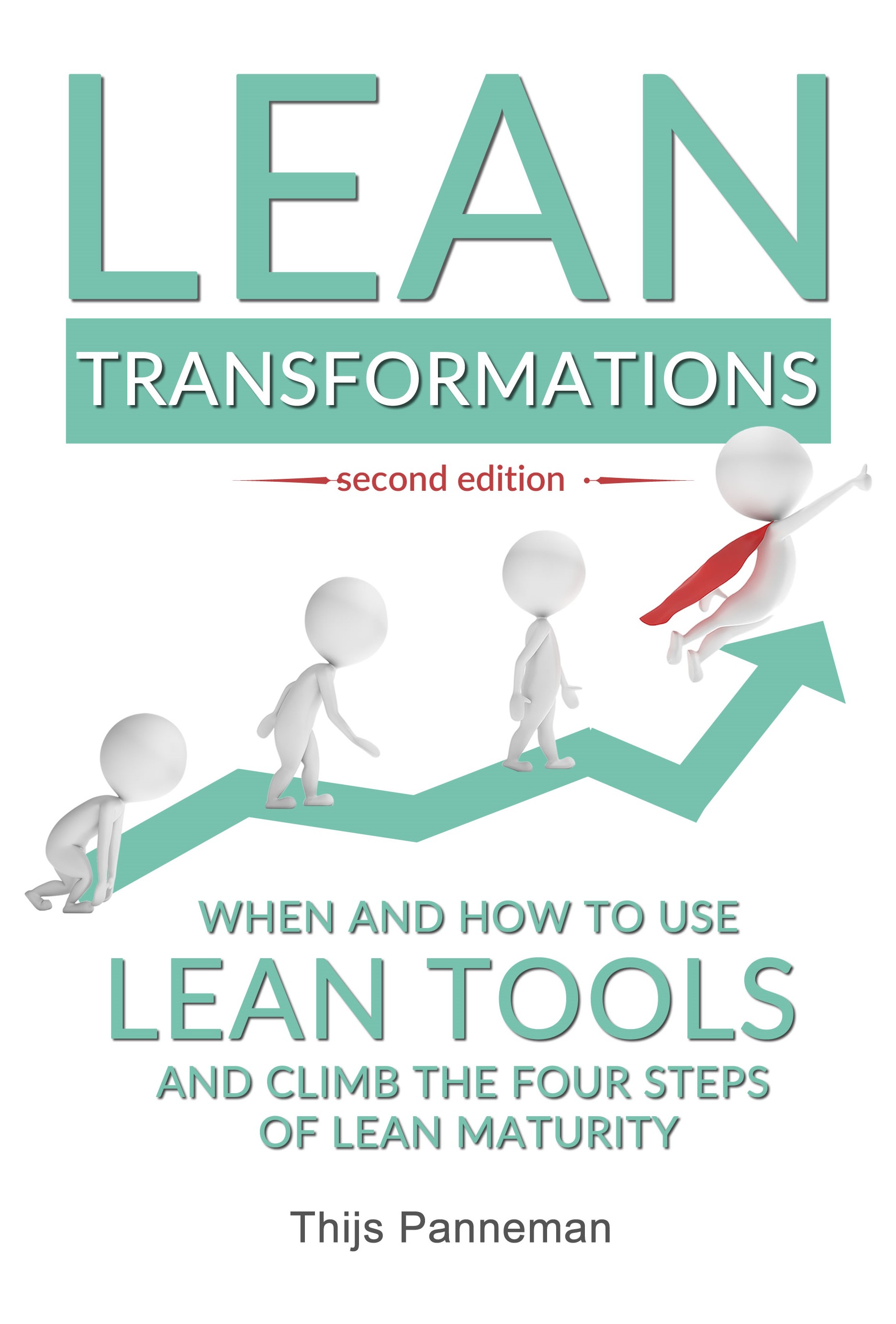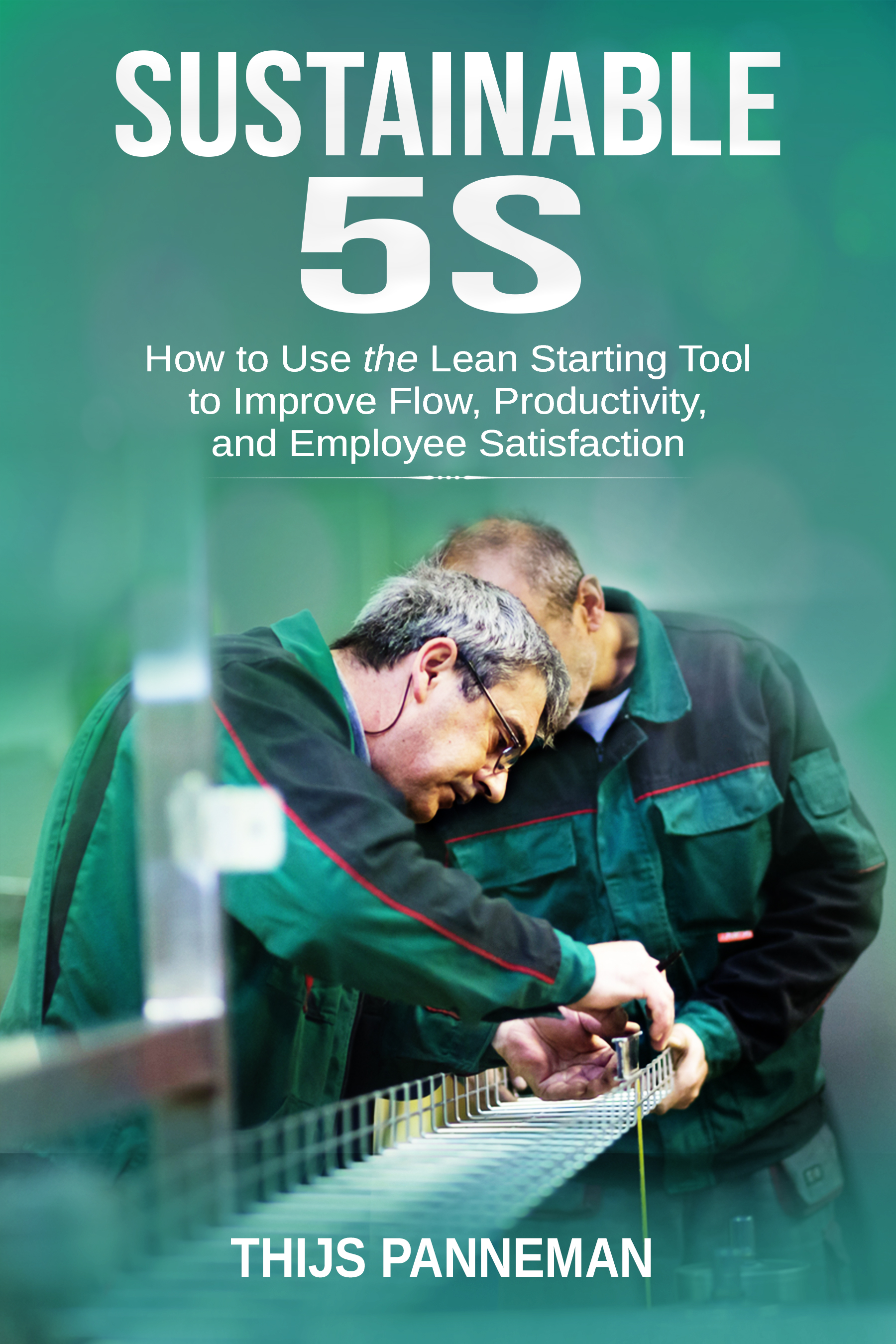In his book, Leading With Lean, Philip Holt describes the role of leaders in any organization in transforming the organization in to a lean organization. He does this by dividing the book in five parts: planning to lead, learning to lead, leading at scale, leading excellence and leading with lean. In this article, each of these five parts will be shortly described with the two topics that I enjoyed reading most.
The first part is called PLANNING TO LEAD and it begins with a chapter on the definitions of lean. Holt describes the difference between work and jobs, in which work refers to the things that we do, and jobs refer to employment. Lean can help us spend more time on valuable work, by reducing non value adding work, but this nothing to do with reducing the number of jobs.
To define what is important within lean, the Holt uses lean as an acronym for leadership, excellence, analysis and no. First, all employees should take the lead in their own domain and focus on what is important for the customer. Second, they focus on improving their own domain and thereby creating excellence. Third, improvements should be fact based and therefore based on data analysis and fourth, the organization has to learn to say no to some opportunities and focus on those that lead to break through results only.
Part two of the book is called LEARNING TO LEAD and it includes a description of the first to types of leadership that lean leaders should master: Leadership Activism and Visible Leadership.
Leadership Activism means that if you want everybody in the organization to take the lead in their own domain to improve the work, the leaders should set the example. Activism means that you as a leader are not just supporting the change (by listening) but that you are playing the game, by doing.
Visible Leadership refers to leaders being visible for the teams. The only way teams can be motivated by the leader’s example behavior is when they can see you doing it. You have to create a showcase for excellence for everyone to see and this showcase includes the following three core elements described in other articles: hoshin kanri, daily management and problem solving.
The third part of the book is called LEADING AT SCALE and its main goal is to infect and motivate as many people as possible with the ‘lean virus’. So after setting the example in leadership activism and showing what you do at Visible Leadership, this part of the book describes the other two types of leadership needed: Mosquito Leadership and Coaching Leadership.
Mosquito Leadership refers to the leader being the ignitor for change. Even though you as a leader are only one person, you can influence an entire company. If you think you are too small to make a difference, try sleeping in a closed room with a mosquito.
Coaching Leadership is the way to influence your colleagues. This means that the leader has the task to enable the team to solve their own problems by asking questions, instead of simply giving the team his or her answer. The kata questions can be a good start where the leader always asks the following 5 questions: what is the target condition? What is the actual condition? Which obstacles do you think you are preventing you from achieving the target condition now? What is your next step? How quickly will we be able to see the outcome of that step? Using these questions will automatically put you as a leader into a coaching role, helping develop the team members into improving their own work.
Part four of the book is called LEADING WITH EXCELLENCE and this part includes chapters about breaking through the mediocrity barrier and making the business excellence team excellent.
To break through the mediocrity barrier, Holt describes five change enablers, which help empowering the team members to lead with excellence: vision, commitment, resources, skills and plan. A vision of where we want to go as an organization, commitment to sustain the transformation and lead by example, resources (time, money, people) to be able to transform the organization, skills in the organization that need to be developed to help people solve their own problems and a plan that includes all attributes of the transformation. These are the five elements of change that are necessary to start any change, including the lean transformation.
For creating a business excellence team, Holt describes a model that includes different levels of lean skills that are necessary to make sure the organization has a pipeline of future lean leaders to make sure the transformation is sustainable. In his model, 100% of the workforce should be trained at foundation level, meaning that they understand where the organization is going and that everybody is equipped with the skills to improve their own work using problem solving and the daily management structure. 10% of people should be at lean advanced level (comparable to green belts), to drive the change at team level. 1% should be lean expert (comparable to black belts) who are fully dedicated to business excellence across teams and finally, 0.1% of the organization should be trained as lean masters (the master black belts) who act between sites or even businesses.
Part five describes LEADING WITH LEAN and in this concluding part of the book, Holt describes the focus of leaders on problem solving and how the life of a lean leader is a journey of journeys.
I already mentioned the importance of solving problems in leading a lean transformation. It is the task of the lean leader to steer the organization into making sure that the right problems are solved: the ones that help to organization in achieving its vision. To maximize the effectiveness of problem solving and becoming a world class organization, the leader should make sure that problems are prioritized at every level of the organization, that problems are solved quickly and effectively, and that only sustainable solutions are implemented to solve the problems.
All the above seems like being a lean leader is very repetitive. It is however, a life time of journeys in which each team, department or organization is different. Never boring. As a lean leader, you have to realize that at a certain point you have done as much as you can in a certain environment, and that it is time to hand over the baton to someone else and find a new journey for yourself.
By this last statement, Holt closes the cycle of lean leadership. We start with the plan of a transformation, use the four leadership styles to transform the organization into an organization where everybody solves problems, and we make sure the future generation of leaders is created within the company. After that, it is time for the lean leader to move into another department to start the cycle again, or maybe even another organization.
Leading With Lean gives us a nice insight in what is expected of leaders in an organization. Lean will only be a success when the leaders are activists, are visible to the rest of the organization, are the ignitors of change themselves and when the coach others in problem solving. It is a very good read.
Continue to:
Lean Audit - J.Muenzing (summary)
REFERENCE:
Holt, Philip. Leading With Lean - An Experience-Based Guide To Leading a Lean Transformation. Deventer: Vakmedianet, 2016. (order this book)












